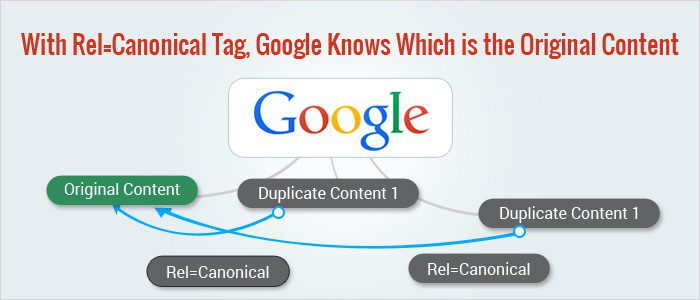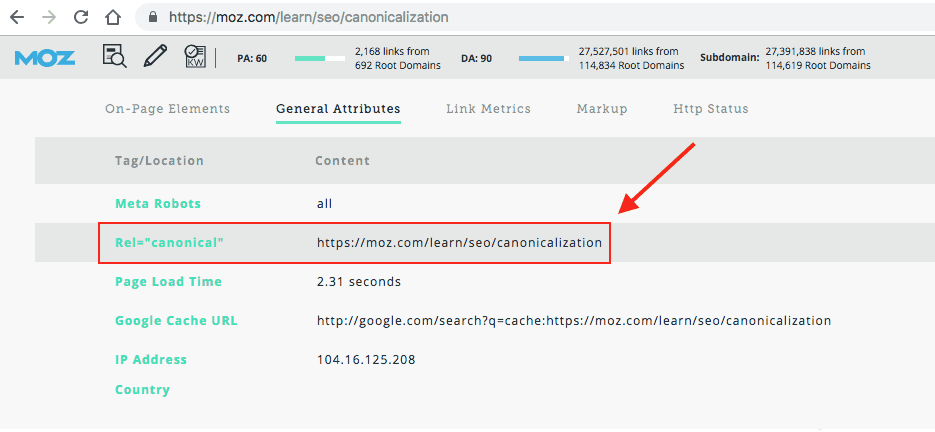What is a Canonical Tag?
Often referred to as a “rel=canonical,” a canonical tag is something that tells search engines that a certain URL (Uniform Resource Locator) is the master copy or authoritative source for a piece of web content. This means that, even if there are multiple versions of the same piece of content that all have different URLs, the canonical tag lets the search engine know which of these versions is the primary source. Typically, the canonical tag will appear in the HTML head of your landing page.
Another way to think of canonical tags is as the technical SEO version of including a citation as one would do in a research or academic paper. A canonical tag is a lot like giving credit to the original material for a piece of content, thus preventing duplicate content penalties. In short, a canonical tag is a quick and easy way to avoid duplicate content issues that can lead to major consequences.

Why is Understanding a Canonical Tag Important?
It’s no secret that plagiarism is a big problem, especially when it’s easier than ever to simply copy and paste content from the Internet and call it your own. In most aspects of life, plagiarism has high stakes. For example, many colleges punish this offense with expulsion. In the online business world, plagiarism comes at a heavy price as well. Committing this offense could result in your business having its credibility compromised or totally destroyed at best.
Duplicate content is especially dangerous because people and search engines perceive content differently. We might think that a similar web address (think one containing “www.” and one without) is actually the same page. The only difference in the URL is how a user arrives on the page. For search engines, however, this is not the case.
Even if the different web addresses ultimately take you to the same page, a search engine will perceive a specific URL for each version – meaning the search engine sees each as a unique page. When this happens, it looks like the pages are duplicates, or that one has totally copied the content of another.
In the eyes of most search engines, this is plagiarism and will come with consequences such as a much lower rank on the search engine results page, or SERP. A lower rank will negatively impact your SEO, putting your business in a bad position. Though duplicate content can come with drastic results, canonicalization is the best solution. A canonical tag helps you be safe rather than sorry!

When Should a Canonical Tag Be Used?
There are a few scenarios in which using a canonical tag is necessary. These include:
URLs That Show Variations of the Same Product
For online businesses, it is a common practice for URLs to be adjusted depending on the specifics of the product or service a potential customer is looking at. This could mean that a product comes in a variety of colors, sizes, or other options. The main page will have a certain URL, like “www.yourbusiness.com/product” while the varied product page URLs will look something like this: “www.yourbusiness.com/product?size=medium&color=green.”
Mobile-Specific URLs
Most e-commerce sites are built to be viewed and navigated seamlessly on mobile devices as well, which means you can include a canonical tag for pages that are specific to mobile, even if they have the same content as a page on the desktop browser version of your site.
URLs Specific to Country or Region
It’s easier to reach some customers and viewers via geotargeting. This means that you add a regional slug or a use a regional subdomain to make sure the page is region-specific and ultimately points back to the master version of the page. A canonical tag is useful here if you want to make it region-specific even though the page itself has much of the same content as the master page.
Self-Referential URLs
If you have a content management system in place, the platform should do this automatically, but you should always check to make sure. When you create a new page, you can give it its own canonical tag. This is called a “self-referential tag.” Self-referential canonical tags are handy because search engines like Google will take these tags into account, placing your site at a higher rank in search results. This means more visibility by the people who count, leading to more business.

How Do You Set a Canonical Tag for Your Page?
The most common way to set up a canonical tag for your page is the following: Using the rel=”canonical” tag.
This is the most common option used among business sites. By using this approach, you are adding metadata to the page head and specifying the right URL to be used as the canonical address. This canonical tag is added into the page’s head tags, and is formatted as:
- <link rel=”canonical” href=”[canonical URL]”>
The main benefit of this approach is that it can identify the canonical tag for an infinite number of pages so that you don’t have to worry about certain URL paths like you would using another method. What’s more, many content management systems will automatically set and update the canonical tag in your pages’ metadata, so you don’t have to do too much work.

Your website comes with a lot of moving parts, and sometimes things can get lost or overlooked. When this happens, it leaves your website in a place where it’s not the best it can be for you or your customer. Directive is a leading SaaS SEO agency and ensures your website is performing at its best. Get a free proposal from us today to learn more.